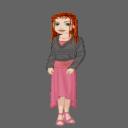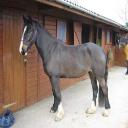Yahoo Answers is shutting down on May 4th, 2021 (Eastern Time) and beginning April 20th, 2021 (Eastern Time) the Yahoo Answers website will be in read-only mode. There will be no changes to other Yahoo properties or services, or your Yahoo account. You can find more information about the Yahoo Answers shutdown and how to download your data on this help page.
Trending News
Welsh Pony sections question?
Curious about the Welsh pony breed. I understand that the different sections represent different types and variations, but what I am wondering is how the section process works. Are the sections essentially unique breeds that require certain lineage? For instance-does a Section A have to come from Section A parents? Are they automatically a certain section at birth or is there a testing process?
Just wondering, have been doing a bit of reading and while I have found info on what each Section entails, i haven't turned anything up yet on the process. Thanks:)
From the US btw;) which is why I am so clueless about this probably as there aren't many Welshes around my region.
6 Answers
- see arr harrLv 71 decade agoFavorite Answer
It is far more about type than height! The "sections" refer to the different parts of the Welsh stud book, so an animal is only a section anything if it has been registered!
A section A is not to exceed 12h. An A that does exceed 12h, even if coming from pure sec A bloodlines, can be re-registered as a section B if the WPCS is in a good mood and feels like it.
A sec B is 12h - 13.2h. If a B goes overheight, that's unfortunate but there's nothing you can do about it except try to cheat your way to a height certificate, or give up on breed classes. A B that does not get as tall as 12h can be transferred down the way to an A but that's even more difficult!
A sec C is also 12h - 13.2 but is of a different type, it has more substance and is heavier than the B. A lot of people struggle to get their heads round a 12h sec C standing next to a 13.2h sec B, but there's no reason why it should not happen. The height allowance is exactly the same. If a C goes overheight, it may be re-registered as a D - although in terms of breed type can look odd against the Ds bred from pure D stock.
A sec D is over 13.2 and has no upper height limit. They should be similar to the sec C in type but with a bit more bone and substance, and should gain their height without looking too horsey. Offspring from D lines which does not reach 13.2 at maturity can go down the register to a sec C but it's more difficult than going up.
- Me!Lv 41 decade ago
Okay, took me a while to get my head around all of this so I'll try and condense it!
The Welsh breeds has four sections, primarily distinguished by height, but also by variations in type: the Welsh Mountain Pony (Section A), the Welsh Pony (Section B), the Welsh Pony of Cob Type (Section C), and the Welsh Cob (Section D).
They are all descended from the Welsh Pony (the original section A)
When the Romans first occupied the UK, they brought their horses with them that carried Arabian blood-lines. When they abandoned the uk in the fifth century most of their horse stock was turned loose, resulting in the first introduction of Arab blood. These traces are present in the Welsh Pony today in its Arab-like appearance.
So... the true welsh ponies became well known for their hardiness (they lived in Wales which is well known for its harsh climate!) and their Arabian beauty. This was the welsh section A
The Welsh section B is a cross between the welsh section A's and Hackney/Thoroughbreds and are therefore known for elegant movement and athletic ability while still retaining the substance and hardiness of the foundation stock, the Section A Welsh pony.
The Welsh section C first resulted from a crossbreeding between the Welsh mountain pony (Section A) and the Welsh Cob (Section D). Today, some Section C ponies are still produced from this cross. In the past the WPCS also accepted Section C ponies with Section B blood but that is no longer the case. The section C is also influenced by the Norfolk Trotter, the Hackney and Yorkshire Coach Horse
The Welsh section D contains thoroughbred blood and has contributed to the founding of many other horses across the world such as the Morgan horse.
Hope I helped and I hope you can understand this!
- edge6661Lv 51 decade ago
This is how I understand it:
Each section has a height range with Sec As the smallest and Sec Ds the biggest. Sec As (Welsh Mountain Ponies) and Sec Bs (Welsh Ponies) are both a more refined breed. The Sec As in particular normally have a very beautiful, Arab head. Sec C & D (both Welsh Cobs) are a cob type and not all the Sec Ds are pony size.
All the ponies are descended from the same base stock. Their linage hasn't been recorded in the same way as more modern, man-made breeds like the thoroughbred and they where largely bred in feral groups. I know that some king introduced Arab blood at some point but they where mainly by bred to be good farm ponies by farmers themselves.
EDIT: Just had a look at the society's website and it's in both English and Welsh - cool. If you don't know the Welsh have recently been re-claiming their heritage but re-introducing their own language. (the evil English all but wiped it out). It's that most unpronounceable language ever, check it out.
- 1 decade ago
I'm also from the US :) but I do know a little about the welsh breeds, mostly a section of Welsh has to do with their height, a vet can normally tell you what section of Welsh your horse is when it's born by it's looks and the looks of the parents. If two section A Welsh's are bred together does not necessarily mean mean their foal is going to be a section A. It could very well grow to be in the section B height limit. I know they do the same thing with miniature horses. They have your standard mini, then they have a mini A and a mini B. I have a couple of mini's that some people think are shetlands because their so tall, but they are really section B's.
Hope this helps :)
Source(s): My own research - How do you think about the answers? You can sign in to vote the answer.
- MyNutmegLv 61 decade ago
It's more to do with their height than anything else, there are set height restrictions for the sections, so a section A is the smallest and with the section B those are the pony types. Section C's are the smaller cobs with section D's being the larger cob. Generally the parents tend to throw foals within the same section.
Have a good look round this website http://wpcs.uk.com/
This page has more detail on the sections, http://wpcs.uk.com/breed_information/
- Anonymous7 years ago
I am inheriting a section B mare. Is it advisable to breed her to a section A stallion. There is a beautiful champion section A fairly close to me. Will the offspring be eligible for registration in section A or B depending upon its height?






